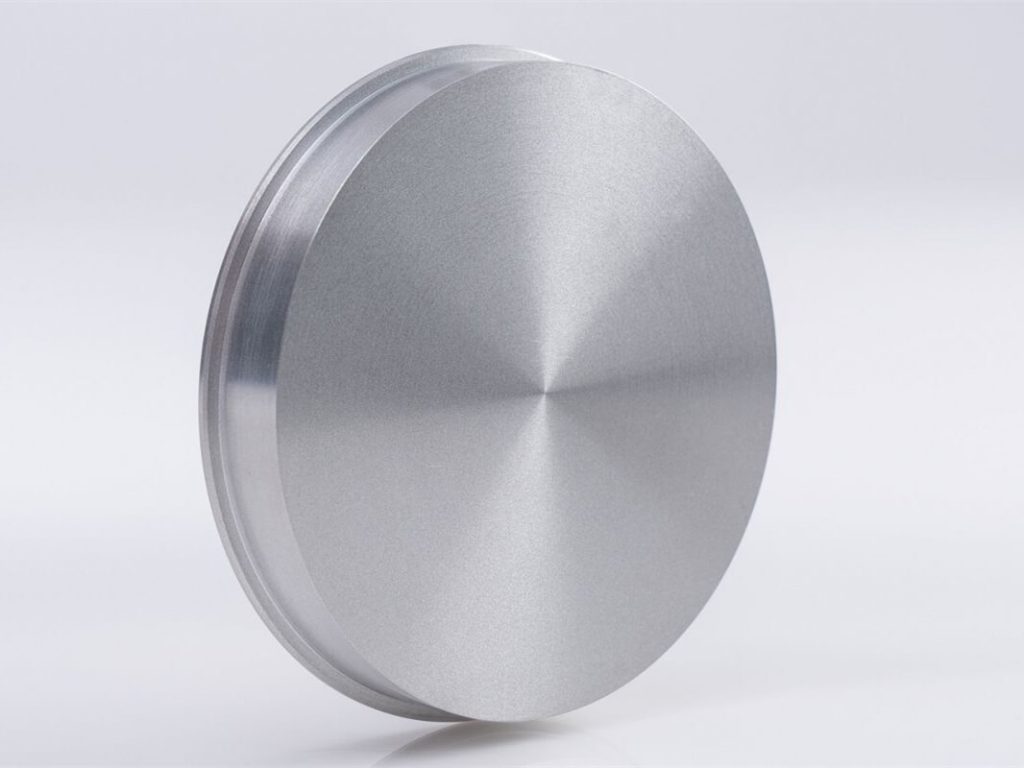In the realm of modern industry, where precision and durability are paramount, titanium emerges as a stalwart. This remarkable metal, celebrated for its exceptional strength-to-weight ratio, corrosion resistance, and biocompatibility, serves as the cornerstone for various applications ranging from aerospace to medical implants. However, at the heart of many cutting-edge technologies lies a crucial component: the titanium target.
Understanding the Titanium Target: A Fusion of Science and Precision
At its essence, a titanium target embodies the pinnacle of material science and engineering ingenuity. Typically manufactured through advanced processes such as vacuum arc melting or sputtering, these targets manifest in various forms, including cylindrical, planar, or rotary configurations. Their production demands meticulous attention to purity and uniformity, as even minor deviations can impair the efficacy of subsequent processes.
The primary function of a titanium target lies in its application within physical vapor deposition (PVD) and magnetron sputtering systems, where it serves as the source material for thin film deposition. During these processes, high-energy ions bombard the target surface, dislodging atoms and generating a flux that deposits onto substrates, creating thin films with desired properties.
Unraveling the Diverse Applications of Titanium Targets
The versatility of titanium targets finds expression across a spectrum of industries, each harnessing its unique properties to drive innovation and advancement.
- Aerospace Industry: In the aerospace sector, where demands for lightweight yet robust materials reign supreme, titanium targets play a pivotal role in coating components to enhance wear resistance, thermal stability, and aerodynamic performance. Whether applied to turbine blades, structural components, or spacecraft surfaces, these coatings extend the operational lifespan of critical assets while ensuring optimal performance under extreme conditions.
- Electronics and Semiconductor Manufacturing: Within the realm of electronics and semiconductor manufacturing, titanium targets facilitate the deposition of thin films essential for the production of integrated circuits, displays, and magnetic storage media. By precisely controlling film thickness and composition, manufacturers achieve enhanced device performance, miniaturization, and reliability, driving the evolution of consumer electronics and digital technologies.
- Medical Devices and Biotechnology: The biocompatibility and corrosion resistance of titanium make it indispensable in medical device fabrication, particularly for implants and prosthetics. Titanium targets enable the deposition of biocompatible coatings that promote osseointegration, reduce inflammation, and mitigate the risk of rejection, thereby enhancing the longevity and functionality of implants while improving patient outcomes.
- Automotive and Decorative Coatings: In the automotive sector, titanium targets find application in the deposition of decorative coatings that impart aesthetic appeal while offering superior scratch and corrosion resistance. From automotive trim components to architectural finishes, these coatings elevate both the visual allure and durability of surfaces, meeting the exacting standards of discerning consumers and designers alike.
- Renewable Energy and Photovoltaics: The quest for sustainable energy solutions has propelled the utilization of titanium targets in the fabrication of thin-film solar cells and energy storage devices. By enhancing light absorption, electrical conductivity, and durability, these thin films optimize the efficiency and reliability of solar panels, contributing to the proliferation of renewable energy sources and the transition towards a greener future.
Forging Ahead: Innovations and Future Prospects
As industries continue to push the boundaries of performance and efficiency, the evolution of titanium targets remains inexorable. Emerging trends such as nanotechnology, additive manufacturing, and advanced coating techniques promise to unlock new frontiers, further enhancing the capabilities and applications of titanium targets.
- Nanotechnology and Miniaturization: The convergence of titanium targets with nanotechnology heralds unprecedented opportunities for miniaturization and precision engineering. By leveraging nanoscale deposition processes, researchers can fabricate ultra-thin coatings with tailored properties, enabling the development of next-generation sensors, medical devices, and electronic components with unparalleled performance and functionality.
- Additive Manufacturing and 3D Printing: Additive manufacturing, colloquially known as 3D printing, represents a transformative paradigm in materials processing and prototyping. Titanium targets, in conjunction with advanced additive manufacturing techniques, facilitate the direct fabrication of intricate geometries and bespoke components with superior mechanical properties and design flexibility. From aerospace turbines to medical implants, this marriage of technologies holds immense promise for personalized, on-demand production across diverse sectors.
- Functional and Smart Coatings: The integration of functional additives and smart materials within titanium-based coatings opens avenues for multifunctional and responsive surfaces. By imbuing coatings with properties such as self-healing, anti-fouling, or stimuli-responsive behavior, researchers envision applications ranging from anti-corrosion coatings for maritime infrastructure to adaptive surfaces for biomedical implants, revolutionizing the way we interact with and perceive materials.
The Titanium Target’s Enduring Legacy
In the grand tapestry of materials science and industrial innovation, the titanium target stands as a testament to human ingenuity and perseverance. From the vast expanse of outer space to the intricacies of the human body, its influence reverberates across disparate realms, shaping the trajectory of progress and discovery.
As we gaze towards the horizon of possibility, propelled by the momentum of technological advancement, let us not forget the humble titanium target, whose silent contributions underpin our quest for excellence and transcendence. In its silent crucible lies the alchemy of transformation, forging dreams into reality and propelling humanity towards a future illuminated by the boundless promise of innovation.
